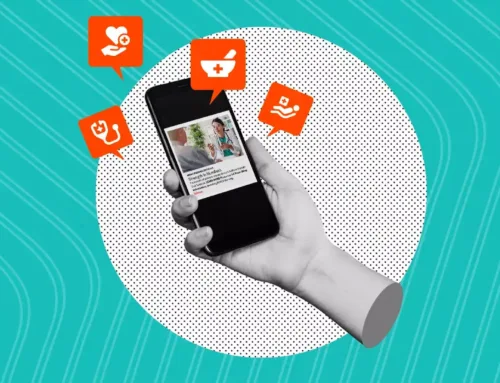Amid lightening-speed advances in technology and torrential regulatory changes affecting the marketing landscape, it may seem daunting to design an effective B2B marketing strategy. Yet, with a steady focus on a handful of proven principles, you can create a solid foundation that will go a long way in supporting your marketing and business success.

Continually Invest in Your Digital Customer Experience
Start with your website. It’s the first place customers and prospects will look for information about your company and products. So, it’s critical that it creates a favorable impression. It needs to be on-brand, optimized for search engines, easy to navigate and include messaging that converts.
Think about content and functionality from your prospects’ and customers’ viewpoints. What information will help them make decisions? How can your website make doing business with you easier? Are there FAQs, forms, manuals, guides, or other educational information that will be helpful to share online? Does your website meet ADA standards? Is your privacy policy compliant with current regulations? If you’re not sure where to start, consider conducting a website audit.
Keep in mind, your website should serve as the hub for marketing activities. Other tactics and promotions should drive traffic to it. You can also use it as a tool to interact with audiences. For example, short pop-up surveys, chat functionality or chatbots are options to augment communication.
Finally, ensure that you have properly set up Analytics, so you can track results and make adjustments. In addition, you’ll also want to do regular maintenance to your site to ensure it’s in good working order.

Understand Your Target Audiences
There are two important questions that work hand-in-hand to help you know and serve your customers better. 1) What are the key challenges that your customers face today? 2) How can your products and services help them solve those challenges? Regular interaction with customers will help you answer these questions. And you may also want to conduct more research.
Simple research could take the form of a short online survey of existing customers or one-on-one interviews with a sampling of key customers. In addition, reading industry publications and blogs, reviewing industry association websites and looking at competitor websites will provide more clues.
If you want to take it a step further, create audience personas. These can help you and others in your company better understand your customer segments. The end game: segmented messaging, creative and content that resonates and generates results. While there’s been some controversy in the UX community about personas, we see value in them if they are developed thoughtfully. Check out these 3 steps to better B2B personas.

Make Your Messages Relevant, Personal and Timely
Personalization is pretty much expected these days. But, one could argue that relevance is even more important. That means getting the right information in front of your target audiences at the right time. You also need to speak to them from their point of view, using their language. And it helps to design offers that answer their current needs.
For example, in our recent campaign for Renaissance Benefits we made the most of a hot job market. We did so by positioning benefits as a tool to help attract and retain employees. In another case, we used relevant offers and ultra-specific digital targeting to generate ROI of 380% for a niche supplement manufacturer.

Go Omnichannel, But Invest Wisely
Strong omnichannel marketing campaigns integrate marketing across a variety of channels (online and offline) to create a consistent user experience, no matter which channel is engaged.
From new social media platforms, blogs, online forums, Over the Top (OTT) and Connected TV (CTV) to innovative tools like ChatGPT, it seems there are always more options to consider. It can be tempting to implement a trendy new solution. Before you do so, consider how it will fit into your overall marketing plan and budget (and the ROI). If adding a new channel will stretch your resources too thin, it could negatively impact your customer experience. And that’s the last thing you want.
Journey Mapping can help you determine the most important touchpoints and channels to effectively reach your targets. And, if you uncover holes you cannot fill right away, design a longer term phased plan.

Use a Mix of Performance, Brand and Customer Experience Marketing
Businesses today put more emphasis on marketing accountability. As a result, many organizations have adopted performance marketing tactics to generate fast results. Those quick gains are important to show how marketing is contributing to the bottom line. But don’t lose sight of the longer game that includes investing in brand advertising and customer experience (CX).
Creating a positive customer experience is critical to retaining existing customers and acquiring new ones. According to research, people are likely to tell 16 people about a poor experience, compared to nine about a positive experience.1
Customer experience is created by all the impressions your customers have with your brand. That means you need to look at every potential interaction to ensure you are delivering what your customers want. And it goes beyond the marketing function to include inventory, logistics, human resources, accounting, accounts receivable and more.

Test, Measure, Optimize and Repeat
As you’re planning your campaign, consider how you can build in testing and metrics. It is critical so you can analyze, adjust and learn as your campaign progresses. As marketing has moved online, it has become easier to measure via your website or landing page. For starters, that means ensuring your web metrics, such as Google Analytics, are set up correctly. You’ll want to implement tracking codes for each tactic, version, etc. If you are using an email marketing platform, most have built-in reporting for metrics such as open rates and click through rates.
Common things to test within a campaign or channel include email subject lines, headlines, creative executions and offers. You can also look at which channels are creating the most engagement and conversions. Then, adjust to invest in the ones that are generating the best results.
Longer term, you may want to examine broader metrics such as brand awareness, return on marketing investment (ROMI), cost per lead, customer acquisition cost, lifetime customer value, net promoter score, retention rate and churn rate. The list goes on and on. To determine which key performance indicators (KPIs) to measure, align your metrics with your business goals.
As B2B marketing experts, we are ready to roll up our sleeves and work along with you to create winning campaigns. Contact us today to find out if we’re a good match.
1 “Customer Experience is the Future of Marketing,” Forbes, 2015






